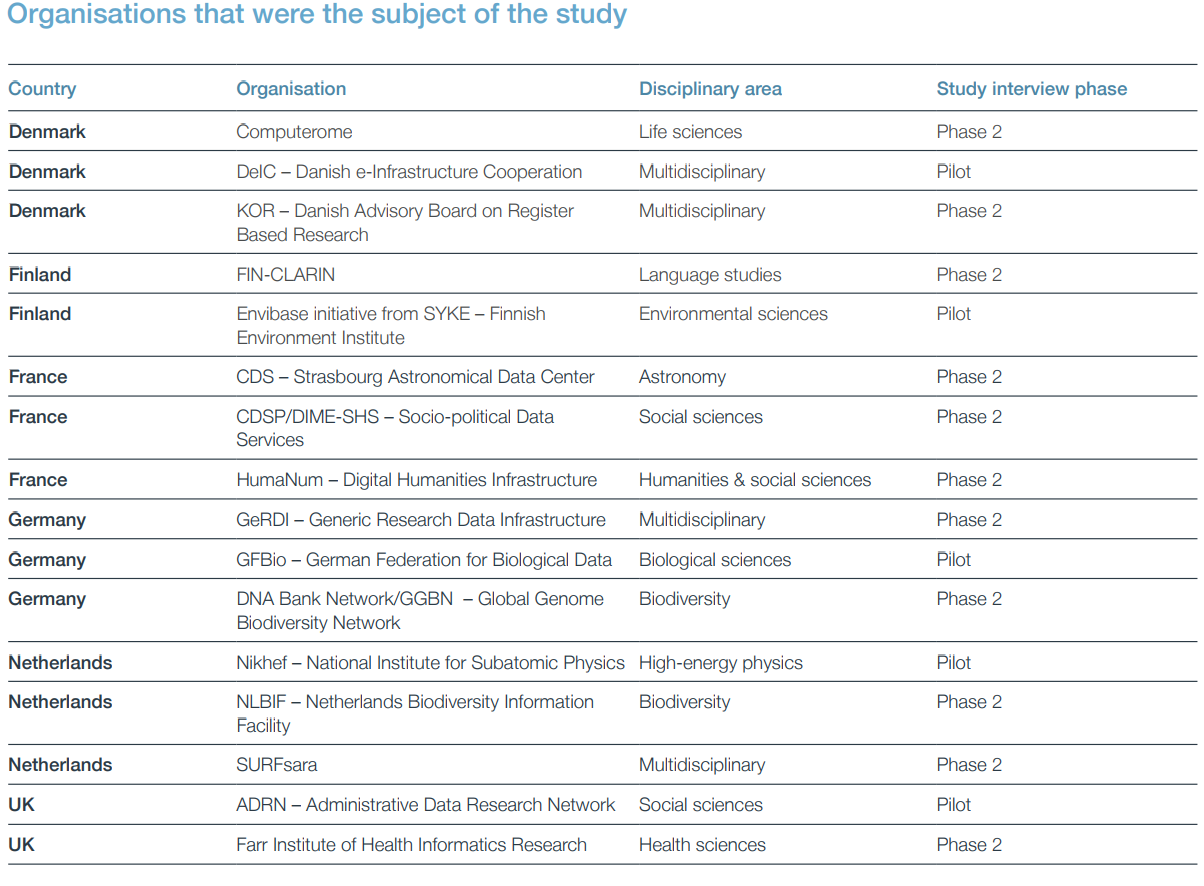
Knowledge Exchange Report: About Federated Research Data Infrastructures (FRDI)
The latest report of the Knowledge Exchange initiative presents an overview and a synthesis of the evolving landscape of "Federated Research Data Infrastructures". Dr Matthias Katerbow and Dr Stefan Winkler-Nees (both Deutsche Forschungsgemeinschaft, DFG, German Research Foundation) are giving a brief overview of the report's contents.
The best-known initiatives in the planning of Federated Research Data Infrastructures (FRDI) the European Open Science Cloud (EOSC) and, on a national level in Germany, the National Research Data Infrastructure (Nationale Forschungsdateninfrastruktur, NFDI). However, there are already existing examples as the Generic Research Data Infrastructure (GeRDI) or the German Federation for Biological Data (GFBio) and others on infrastructures, which might help to better understand what ‘federated’ means, its features and how to address outstanding challenges. Eighteen similarly federated research data infrastructures in Denmark, Finland, France, Germany, the Netherlands and the UK have been studied and their features analysed. We talked to Dr Matthias Katerbow and Dr. Stefan Winkler-Nees to find out more.
What does FRDI actually stand for?
It’s an infrastructure where a range of distributed services – focused on the actual demands of research – are coordinated by an overarching level, with the aim of providing a potentially seamless access to research data and tools. FRDIs can apply to all research disciplines, including physical sciences, life/health sciences, environmental sciences and humanities; they may also be multidisciplinary. Disciplines carry their individual characteristics, e.g. sensitivity and confidentiality of research data, which have a considerable impact on the nature of the federation.
Which FRDIs were interviewed for the report?
The study is founded on the analysis of detailed interviews with experts involved in the management and/or leadership of a range of federated data infrastructures in all six KE partner countries, so in Denmark, Finland, France, Germany, the Netherlands and in the UK.

FRDI seem to be on the rise. What drives FRDIs?
Two broad sets of factors drive the emergence and development of federated infrastructures: Top-down push factors and Bottom-up demand from users, both are relevant in most national contexts.
Push factors reflect a hierarchy of elements:
- Topmost level: factors that reflect broad social and political imperatives, such as big societal concerns – e.g. addressing climate change, desire for open societies.
- Next level: requirements of national public policy, driven by the government and public agencies in areas such as open data.
- Lower level: drivers from actors in a broader research environment: funders, universities, infrastructure providers and sometimes other players too, including commercial organisations.
Bottom-up demand:
- Demand factors reflect different research cultures with respect to open science and information sharing; that may vary considerably, from highly collaborative communities (e.g. high energy physics, astronomy) to communities which may find it more difficult to embrace an e-research culture (e.g. some humanities).
There also exists a crossover between push and demand, whereby national or international players take steps to ascertain needs and expectations of research communities that they serve. Top-down organisations fostering a bottom-up dialogue.
What are the practices and services of FRDIs?
FRDIs are characterised by wide range of practices and services, which vary according to the nature of each initiative and evolve dynamically in the light of researchers’ needs. A single model of service provision does not exist; nor a universal template for all infrastructures. This is not surprising, since these are determined largely by particular circumstances and cultures that have fostered their emergence and development.
Some FRDIs recognise importance of a holistic approach to their service offer, articulated around the entire research data life cycle. For most of them, a key characteristic of their activity is to provide means of allowing easy, intuitive and a potentially seamless access to distributed resources, irrespective of latter’s location.
Other factors that FRDIs address include AAI (authentication, authorisation, identification), with the legal issues that this raises; usability/interoperability; data standards; security; ethical and legal issues, particularly where sensitive data is involved; sharing and linking; and openness. Training programmes and nurturing of skills feature for some infrastructures, but this is not something that all FRDIs are in a position to support.
]Report details: The evolving landscape of Federated Research Data Infrastructures (DOI: 10.5281/zenodo.1064730)
What role do the stakeholders play?
Involving users is considered as being crucial. Infrastructures are careful to nurture relationships with partners within the academic sector and beyond. Engagement with stakeholders forms an important part, with efforts often made to foster and maintain the dialogue with users – reflecting a desire to ascertain demand – and other players, including those within broader society.
What are the main challenges for FRDIs?
Major challenge for the development of FRDIs are:
- Complexity and fragmented nature of research data environments in which they evolve.
- Difficulties in addressing different legal frameworks, administrative systems, funding regimes, regulations and policy environments and also in ascertaining range of different user needs.
- Slow speed of cultural change, identifying reliable sources of finance, ensuring compatibility of standards and addressing the maze of legal and regulatory requirements.
Infrastructures are often characterised by long-term financial uncertainty, with funding typically taking the form of project grants for finite periods – raising the issue of sustainability of service. This type of short-termism is not helpful for the development of FRDIs, and funding models need to evolve in order to reflect the strategic status of research data in the research process.
Why now? Why do FRDIs evolve to this point in time?
The management of research data (mostly, but not exclusively, in digital form) has increasingly become an intrinsic part of the academic research endeavour, across almost any discipline: not just in the pure sciences and social sciences, but in the arts and humanities too. A diminishing number of researchers do not use, create or share data, whatever forms this might take. As data-centric research methodologies have become more prevalent it consequently required the development of infrastructures to help ensuring that data is validated, accessible, shareable, reusable and effectively curated. Since this started in silos and for small groups of scientific users, it seems now to be the moment to start aggregating existing infrastructures from the local to the regional and national as well as to the European level.
Dr Matthias Katerbow (DFG, German Research Foundation) | Twitter | OrcID
Dr. Stefan Winkler-Nees (DFG, German Research Foundation)
Knowledge Exchange was launched in 2005 by national organisations that wanted to exchange expertise and combine forces to enhance higher education and research by using the potential of an open and transparent internet. They were inspired by the declarations on open access aiming to make information widely accessible to society. Now in its 11th year, Knowledge Exchange has a proven track record of work on open access, research data, research software and open research.
This very report is based on an approach by the Knowledge Exchange Research Data Expert group and the fieldwork as well as the report were undertaken by InformAll CIC, i.e. Stéphane Goldstein, during the first half of 2017, on the basis of interviews with experts from a range of organisations that run federated infrastructures in the respective countries.
View Comments

Shaping the EOSC – Leibniz Association Among the Early Movers
The European Science Cloud (EOSC) Declaration received a tremendous amount of...



